| Its ten-syllable scientific name is a big mouthful, so the tree is better known by common names. Other names for this S Mexican, Guatemalan tree include: Devil's-hand. Mexican Hand-tree or Plant. Tree-of-the-Little-Hands. |
| It is a frost-tender evergreen tree, celebrated for its curious hand-like flowers borne in summer. The genus is related closely to and hybridizes with Fremontodendron, my plant-of-the-month for February 2010. The two genera hybridize, and below I show a picture of the bigeneric cross Chiranthofremontia Lenzii. |
| The tree can grow rapidly to 100 feet tall, its trunk to 6 feet thick. The leaves are soft, to 12 inches long, 5-lobed mostly; held on long stems. They are dark green and scarcely hairy on top, but pale whitish-brown with thick hairs beneath. The flowers are red and brown, to 2 inches long, and bat-pollinated. "In the different stages of its progress, the flower appears first like a shut hand, and then an open one" due to the bright red 5 fingerlike anthers and thumblike style. Seedpods are fuzz-covered, and woody, 3 to 6 inches long. |
| Handflower Tree not mentioned in houseplant books, but is suited ideally for cool conservatories. |
| Regarding edibility, Nicholas Hellmuth of Maya-Ethnobotany.org, reported the flowers were a well known flavoring for cacao of the 16th century Aztec, and that the leaves are used to wrap tamales, but seemingly more than just to wrap them, to also impart a flavor. "Actually the leaves themselves can evidently be eaten." |
| Mature tree leaves are too dense with chewy hairs, to be eaten. However, tender leaves of very young seedlings have few hairs, taste bland, are mucilaginous, and the hairs non-irritating. No worse than eating the skin of a peach. If a less-hairy cultivar were cloned it may make a good perennial vegetable. |
The photographs below show a young plant (partly eaten), and flowers and leaves of mature trees, and the hybrid.
Back |
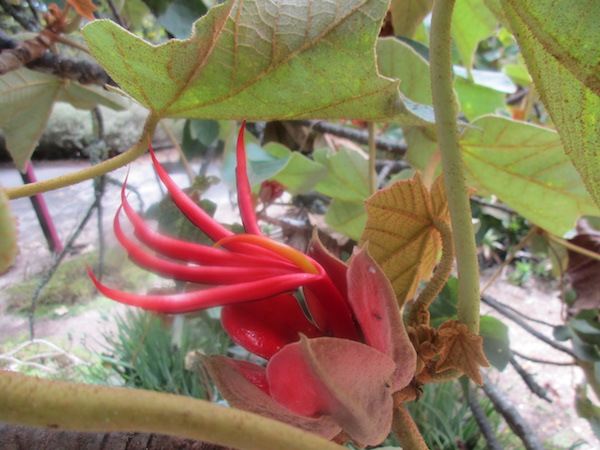
Chiranthodendron flower; photo by ALJ
|
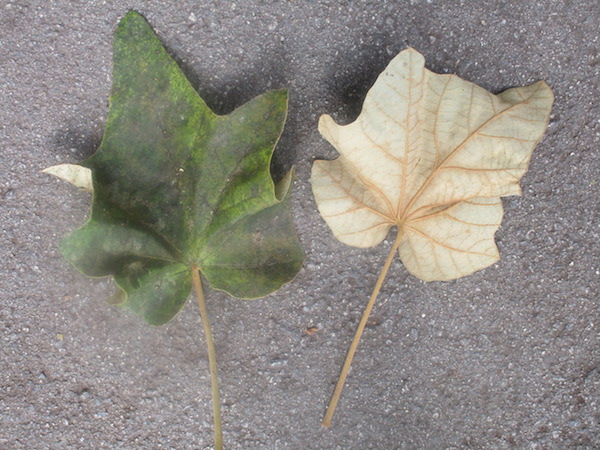
Chiranthodendron mature tree leaves ; photo by ALJ
|
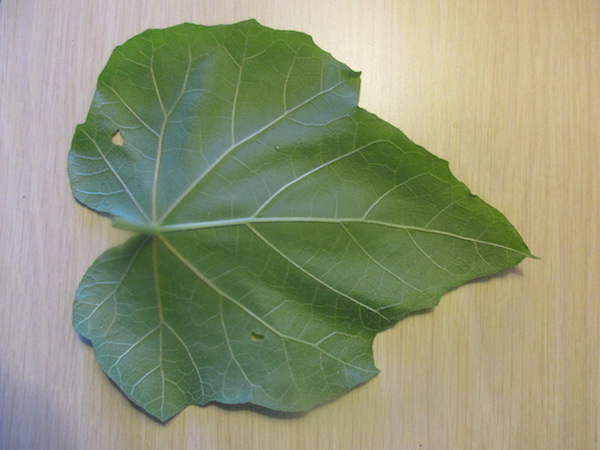
Chiranthodendron seedling tree leaf underside ; photo by ALJ
|
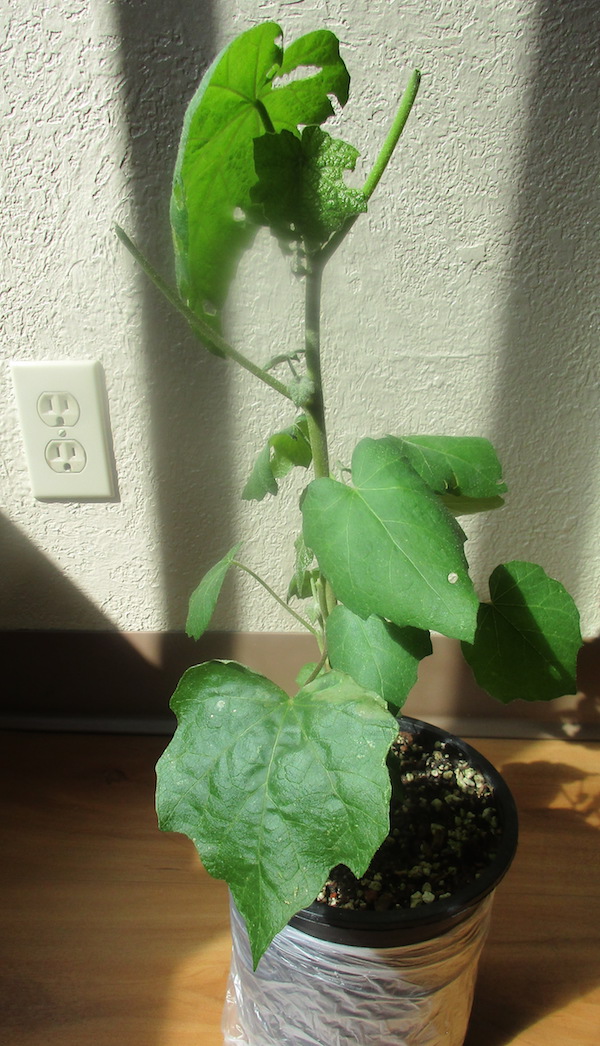
Chiranthodendron potted seedling, eaten partly ; photo by ALJ
|
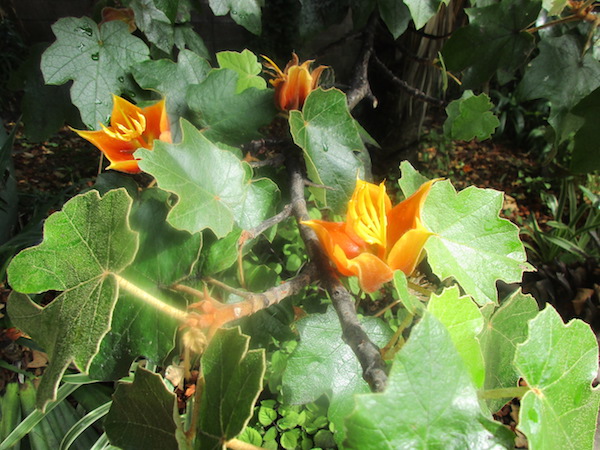
Chiranthofremontia Lenzii flowers and foliage ; photo by ALJ
|

